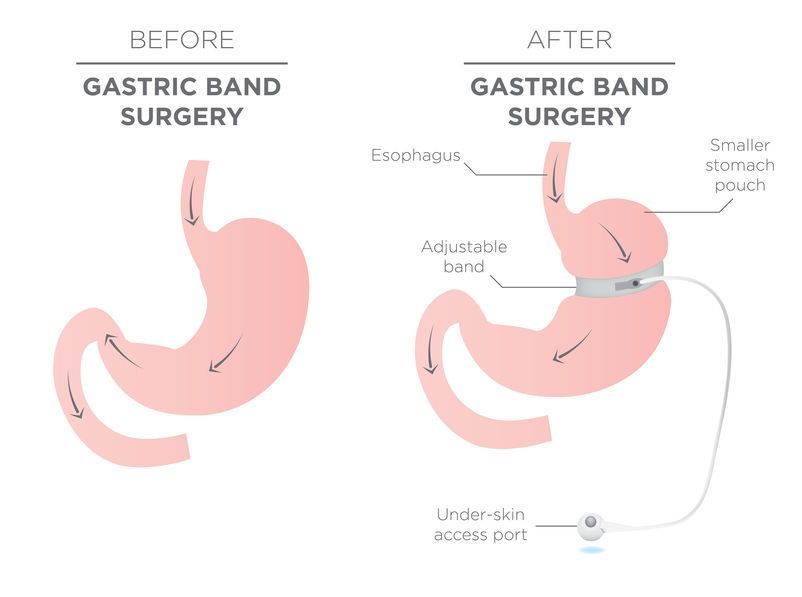 Obesity is increasingly becoming a serious issue amongst most American adults’ population. Some worrying statistics show that 20% of American adults will be obese by the year 2025. Since obesity is a condition of being overweight with a BMI of 35 and above, people find it hard to lose weight through conventional methods such as working out coupled with proper dietary habits. In this case, the only available option is weight-loss surgeries. Most of these surgeries have proven effective while some patients have had serious complications. This article gives an analysis of weight loss surgeries that are reversible.
Obesity is increasingly becoming a serious issue amongst most American adults’ population. Some worrying statistics show that 20% of American adults will be obese by the year 2025. Since obesity is a condition of being overweight with a BMI of 35 and above, people find it hard to lose weight through conventional methods such as working out coupled with proper dietary habits. In this case, the only available option is weight-loss surgeries. Most of these surgeries have proven effective while some patients have had serious complications. This article gives an analysis of weight loss surgeries that are reversible.
- Intragastric/Gastric Banding
This type of weight loss involves a surgeon placing a deflated balloon inside your stomach. It is passed on to the mouth through the process known as endoscopy and does not involve incisions on the skin whatsoever. Once the balloon is sitting in the stomach, it is then filled with saline water, where the amount of the water will be determined by the size of your stomach. A larger stomach, of which most obese people have, will be filled with lots of the water.
The saline water in the balloon plays the role of a filled stomach and the brain stops sending satiety to the stomach. This makes the patient to always feel fuller, in which case they take only a small portion of food. The food must be in liquid form in the first few days after surgery, as soft liquids follow in about a week but you can start having soft solid foods weeks after the surgery. The good thing with this procedure is that it does not involve any incision and can always be reversed. It is an effective weight loss alternative and does not pose the risk of malnutrition. On the other hand, one might experience nausea and vomiting.
- Vagal Blockade
This type of procedure involves placing a device that resembles a pacemaker inside the stomach, just above the rib cage. The device emits electric waves that are sent to the vagal nerves of the brain. Since this nerve is responsible for controlling the amount of food we take, it signals to the brain that the stomach is full whereas it is not. The device can be adjusted by the use of a remote control outside the body. The good thing is that the device can always be removed once the patient has reached their desired optimum weight.
It also does not involve any type of incision whatsoever and this, therefore, means that you will not be required to stay in the hospital for long after the procedure. This also means that you are not at the risk of malnutrition due to lack of vital nutrients such as vitamins, as it does not entail the cutting of the small intestines. The main side effects with this device are that you may experience nausea, vomiting, chest pains and on the extreme, some infections during the implantation of the device. To ensure everything goes according to plan, your physician has to ensure the battery does not run out.
- Laparoscopic Adjustable Gastric Banding
This surgery entails the surgeon placing an inflatable band in the stomach. The band separates the upper stomach from the lower one by creating two small pouches that are still connected via a canal. The small channel can always be adjusted to slow down the rate at which food empties into the lower pouch of the stomach. The ripple effect of this slowing down of food is that the stomach always feels fuller because of the small pouches. This procedure is far way better than most surgeries that involve surgeries because you can have a small surgery to remove the band after you have acquired the desired weight limit or when the band is not working. It does not also pose the risk of lack of important nutrients, hence no risk of dumping syndrome side. Nevertheless, you might experience nausea vomiting, especially if the band becomes too loose.
Although some weight loss surgeries are not for everyone, it is important to note that these procedures are not meant for just anyone; the eligible candidates are people with a BMI of 40 and above, and on whom all other conventional weight loss methods have failed. They are also not meant for people with health conditions like type 2 diabetes, liver diseases, and heart-related problems as well as stroke. To make the most out of the procedures, experts advise that you stick strictly to the diet plan provided by your nutritionist. This way, you also reduce the risks of side effects.

